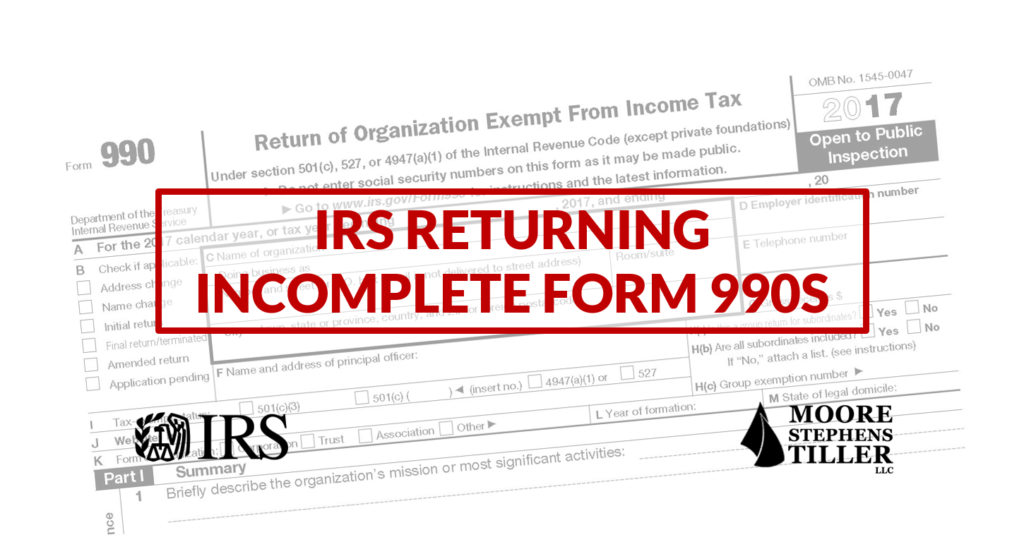What You Should Know About Correcting 990s That Have Errors or Omissions
If your organization has ever had to file a Form 990-series tax return, you know that it’s lengthy and complex. And as you might suspect, the IRS expects these critical documents to be absolutely accurate, comprehensive, and submitted by the deadline.
Beginning in 2018, the agency started to send back Form 990-series returns if they were incomplete or incorrect. Here’s what you need to know if you’re dealing with this situation.
What Could Go Wrong?
There are numerous omissions or errors you could make that would cause the IRS to request corrections and/or additional information. Here are some of them:
- Wrong version of the Form 990. Be sure that you’re filing the form for the correct tax period.
- Incorrect identifying information. Triple-check details like your EIN, tax period, and Group Exemption Number (GEN).
- Incomplete form. Every Form 990 filer is required to complete Parts I-XI.
- Missing signature. An officer—or if you’re representing a trust, the authorized trustee(s)—must sign in Part II, Signature Block.
- Required IRS Schedules not included. Depending on your organizational structure, you’ll have to complete and file the appropriate Schedules; these can include a combination of A, B, C, D, J, L, R, and O.
How Do You Know?
The IRS will send you a letter if you’ve filed an incomplete or inaccurate return. There are three possibilities here:
- Missing information on Form 990 (Letter 2694C)
- Missing information on Form 990-EZ (Letter 2695C)
- Missing information needed to process EO return (Letter 2696C)
If you’re not sure, look in the lower right corner of the letter to find its number.
What Should You Do?
If you receive one of these letters, it’s your responsibility to provide missing information and/or correct inaccuracies. You should read the instructions again carefully, since the IRS may not have identified absolutely everything in its letter. Be sure you’ve signed your return, and include a copy of the IRS’ correspondence.
You must also provide a reasonable cause explanation for your errors or omissions. You will be making this written statement under penalties of perjury, so include any supporting documentation. Address both the reason the IRS is assessing a penalty and your own reasons for failing to submit a completed Form 990. Be sure to answer these questions:
- If you did not request a filing extension, why didn’t you?
- Were you exercising “ordinary business care and prudence,” rather than being neglectful or careless?
- How will you prevent this from happening in the future?
Once you’ve completed all of this, mail the corrected return and your written statement to the address at the top right of the original letter within 10 days. The IRS will decide on a case-by-case basis whether you’ll be required to pay a penalty, which is $20 for each day the return is late up to a maximum of $10,000, or $100 per day with a maximum of up to $50,000 if your organization’s gross receipts exceed $1,000,000.
If you’re filing a Form 990 for the first time, we strongly recommend that you consult with us. Get it right the first time, and you won’t have to worry about complying with the IRS’ instructions for dealing with errors and omissions. We know it’s critical that you keep your exempt status. Let us help you ensure that your return is complete and correct.
Consult with us

